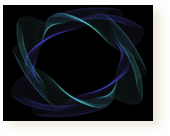
Excerpts
Einstein’s rabbi lived for another twenty years — years filled with many more conversations. I did not know that at that moment when his wife Eden told me that he had suffered a heart attack and had been taken to the Princeton Hospital. I thought I had lost him and, with him, my guide; the one who had touched my soul and showed me how where was the path I needed to take. When I told him my fears, he scoffed at me and quoted a letter Einstein wrote to his friend and fellow physicist Michele Besso’s widow after Besso’s death: “In quitting this strange world he has once again preceded me by just a little. That doesn’t mean anything. For we convinced physicists the distinction between past, present, and future is only an illusion, however persistent.”
Time, as Einstein discovered in his Special Theory of Relativity, is not the constant we assume it is, but is warped by the mass of the earth spinning through space. Those “unfinished” statues of Michelangelo in Florence so intrigued Einstein because they falsely captured a moment in time; as though a moment could only be now, devoid simultaneously of past and future. It is perhaps why God’s name in Hebrew is the verb “to be,” with its past, present, and future forms combined into one unified word. Time, according to Einstein, is a continuum that fluctuates — like stepping into the moving water of a stream.
Time, as Einstein discovered in his Special Theory of Relativity, is not the constant we assume it is, but is warped by the mass of the earth spinning through space. Those “unfinished” statues of Michelangelo in Florence so intrigued Einstein because they falsely captured a moment in time; as though a moment could only be now, devoid simultaneously of past and future. It is perhaps why God’s name in Hebrew is the verb “to be,” with its past, present, and future forms combined into one unified word. Time, according to Einstein, is a continuum that fluctuates — like stepping into the moving water of a stream.

When I was twelve, my parents and I went to see the Martha Graham Dance Company at McCarter Theatre on the Princeton campus. When we passed Einstein’s house on Mercer Street my father said, “That’s where Einstein lived!” I strained my head around in the back seat to keep the house in sight for as long as possible. “Perhaps you’ll grow up and become a great scientist like Einstein,” my mother added.
The program notes that night had a wonderful anecdote about Graham and Helen Keller. Once Helen Keller visited the dance studio where Graham’s dancers were rehearsing. To let her get a better sense of what dance was all about, Graham had Keller put her hands around a dancer’s waist and then had him leap straight up off the wooden dance floor. Keller beamed. “That’s just like having an idea!” she said.
After I read this, I would always think of it as we passed Einstein's house. The image of an idea as a leap into the air, a leap into the unknown, an escape from gravity and that which holds us down, seemed all that more significant when I thought of Einstein making those vast leaps beyond what was known and accepted.
The program notes that night had a wonderful anecdote about Graham and Helen Keller. Once Helen Keller visited the dance studio where Graham’s dancers were rehearsing. To let her get a better sense of what dance was all about, Graham had Keller put her hands around a dancer’s waist and then had him leap straight up off the wooden dance floor. Keller beamed. “That’s just like having an idea!” she said.
After I read this, I would always think of it as we passed Einstein's house. The image of an idea as a leap into the air, a leap into the unknown, an escape from gravity and that which holds us down, seemed all that more significant when I thought of Einstein making those vast leaps beyond what was known and accepted.

The rabbi continued, “In truth Einstein and Kafka in Prague were a study in contrasts. While Kafka was quiet at Fanta’s salon, Einstein joined in discussions. Albert was already well known; Kafka, unknown. Both were obsessed with the chaos of the world and the universe — chaos reflected in the paintings of Picasso and Cubists. Kafka embraced and entered the madness of that chaos, while Albert tried to find order in it.”